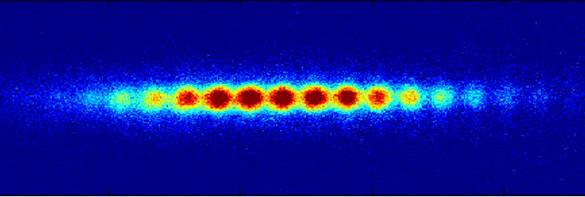
New Interferometer May Shed Light on Quantum Gravity
New Interferometer May Shed Light on Quantum Gravity
June 4, 2021 - Summarized from Physics World
Physics World – An Israeli-led collaboration, including Ben-Gurion University of the Nevev (BGU), has used atom-chip technology to build a magnet-based interferometer. The collaboration’s research, which combines aspects of two famous physics experiments from the past, reveals that the division of particle spins into two populations – as observed by Otto Stern and Walther Gerlach a century ago – involves pure quantum states.
In the future, the new interferometer could be used to investigate quantum gravity as well as theories about a possible fifth force of nature.
Physicists have been discussing the possibility of magnet-based interferometry ever since Stern and Gerlach carried out their pioneering work on quantized angular momentum in the early 1920s. Their so-called Stern-Gerlach experiment provided convincing evidence that the silver atoms possessed an intrinsic and quantized angular momentum (now termed “spin up” and “spin down”). However, it did not prove that the atoms were in pure quantum states and therefore able to follow both trajectories simultaneously.
As Prof. Ron Folman, head of the Ben-Gurion University of the Negev (BGU) Center for Quantum Science and Technology, points out, individual atoms could have followed either one trajectory or the other, rather than both at the same time.
Folman and colleagues released individual atoms of rubidium-87 from a magnetic trap beneath an atom chip and used a radio-frequency pulse to place them in a superposition of two spin states. By sending pulses of current through the chip, they then exposed the free-falling atoms to four magnetic gradients in quick succession – splitting each atom’s wave packets along two paths, halting the wave packets’ relative movement, bringing them back together and finally halting them again.





